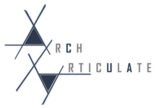NATA Exam Syllabus If you’re planning to pursue a career in architecture, then appearing for the National Aptitude Test in Architecture (NATA) exam is a must. NATA is a national-level exam that evaluates your aptitude and knowledge in the field of architecture. The exam is conducted by the Council of Architecture (COA) and is accepted by various architecture colleges across India. In this article, we’ll take a closer look at the NATA exam syllabus and everything you need to know about it.
Introduction to NATA Exam
NATA exam is a two-part exam that consists of a computer-based test and a drawing test. The computer-based test comprises two sections, Mathematics and General Aptitude. The drawing test assesses your drawing and sketching skills. The exam is conducted twice a year, in April and July.
NATA Exam Pattern
The NATA exam pattern consists of two parts: Part A and Part B. Part A is the computer-based test that comprises two sections, Mathematics and General Aptitude. Part B is the drawing test that assesses your drawing and sketching skills.
The Mathematics section consists of 20 questions, and you’ll have to solve them in 60 minutes. The questions are based on topics such as algebra, trigonometry, coordinate geometry, and calculus. The General Aptitude section also consists of 20 questions, and you’ll have to solve them in 60 minutes. The questions are based on topics such as analytical reasoning, mental ability, and general awareness.
The drawing test is conducted offline, and you’ll have to draw and sketch on paper. You’ll be given two questions, and you’ll have to complete them in 120 minutes.
NATA Exam Syllabus
The NATA exam syllabus is divided into three sections: Mathematics, General Aptitude, and Drawing. Let’s take a closer look at each of these sections.
Mathematics
The Mathematics section of the NATA exam tests your knowledge of mathematics. The topics covered in this section are:
- Algebra
- Trigonometry
- Coordinate Geometry
- 3-Dimensional Co-ordinate geometry
- Differential Calculus
- Integral Calculus
- Differential Equations
- Statistics
- Probability
General Aptitude
The General Aptitude section of the NATA exam tests your general awareness and reasoning ability. The topics covered in this section are:
- Visualizing different sides of 3D objects
- Analytical reasoning
- Mental ability
- General awareness of national/ international architects and famous architectural creations
Drawing
The Drawing section of the NATA exam tests your drawing and sketching skills. The topics covered in this section are:
- Understanding of scale and proportion
- Geometric composition
- Shape, building forms, and elements
- Aesthetics
- Freehand drawing
- Sketching of urban scape and landscape
- Perspective drawing
- Common day-to-day objects like furniture, equipment, etc.
Tips to Prepare for NATA Exam
Here are some tips to help you prepare for the NATA exam:
- Start your preparation early and create a study schedule.
- Understand the exam pattern and syllabus thoroughly.
- Practice drawing and sketching regularly.
- Solve previous year question papers to get an idea about the exam.
- Take mock tests to evaluate your
progress and identify your weaknesses.
- Focus on your weaker areas and work on improving them.
- Stay updated with the latest developments in the field of architecture.
Importance of NATA Exam Syllabus
The NATA exam syllabus is an important document for candidates appearing for the exam. It provides a clear understanding of the topics that are covered in the exam and helps candidates prepare accordingly. It also helps candidates identify their weaker areas and work on improving them. By following the NATA exam syllabus, candidates can ensure that they cover all the important topics and increase their chances of scoring well in the exam.
How to Use NATA Exam Syllabus Effectively
Here are some tips to help you use the NATA exam syllabus effectively:
- Divide the syllabus into smaller parts and create a study schedule.
- Understand the weightage of each section and allocate time accordingly.
- Identify your weaker areas and focus on improving them.
- Solve previous year question papers to get an idea about the exam.
- Take mock tests to evaluate your progress and identify your weaknesses.
NATA Exam Syllabus FAQs
- What is the NATA exam syllabus? The NATA exam syllabus is a document that lists the topics that are covered in the NATA exam.
- Is the NATA exam syllabus the same every year? The NATA exam syllabus may change slightly from year to year, but the basic topics remain the same.
- Can I score well in the NATA exam if I only focus on the drawing section? No, you need to prepare for all the sections of the NATA exam to score well.
- How important is the NATA exam syllabus for candidates? The NATA exam syllabus is very important for candidates as it provides a clear understanding of the topics that are covered in the exam and helps them prepare accordingly.

As an architecture and interior designer, I am passionate about creating spaces that inspire and delight those who inhabit them. With over a decade of experience in the industry, I have honed my skills in both the technical aspects of design and the art of crafting beautiful, functional spaces.
After earning my degree in architecture, I began my career working for a prestigious firm where I was exposed to a wide range of projects, from commercial buildings to high-end residential properties. During this time, I developed a keen eye for detail and a deep appreciation for the importance of form and function in design.
In recent years, I have struck out on my own, founding my own design studio where I have been able to further explore my passion for interior design. I believe that a well-designed space can transform the way people live and work, and I take pride in working closely with clients to understand their needs and create spaces that exceed their expectations.
Throughout my career, I have been recognized for my innovative and creative approach to design, and have been honored with a number of awards and accolades. When I’m not working on design projects, you can find me exploring the outdoors or seeking inspiration in the world around me.
